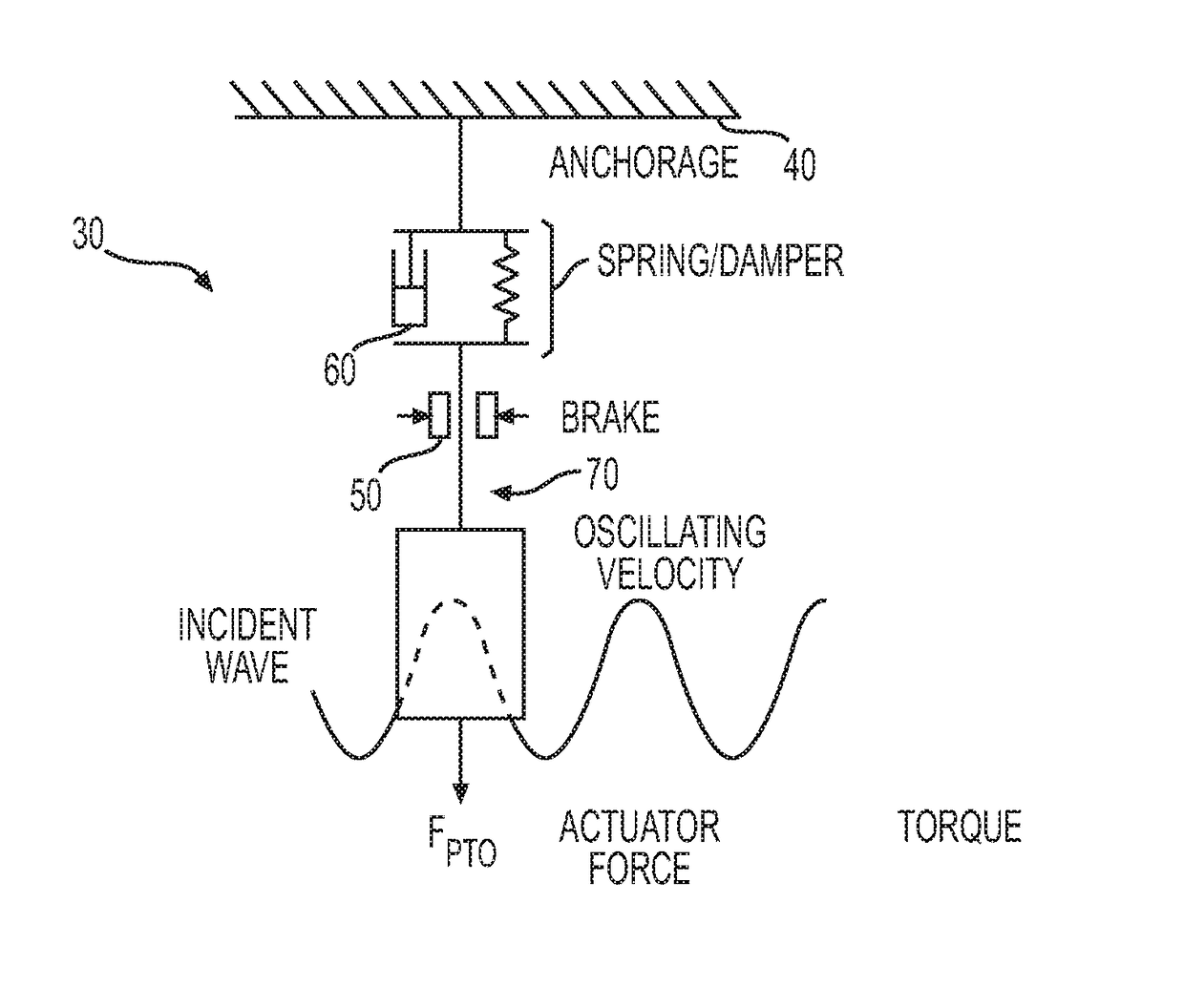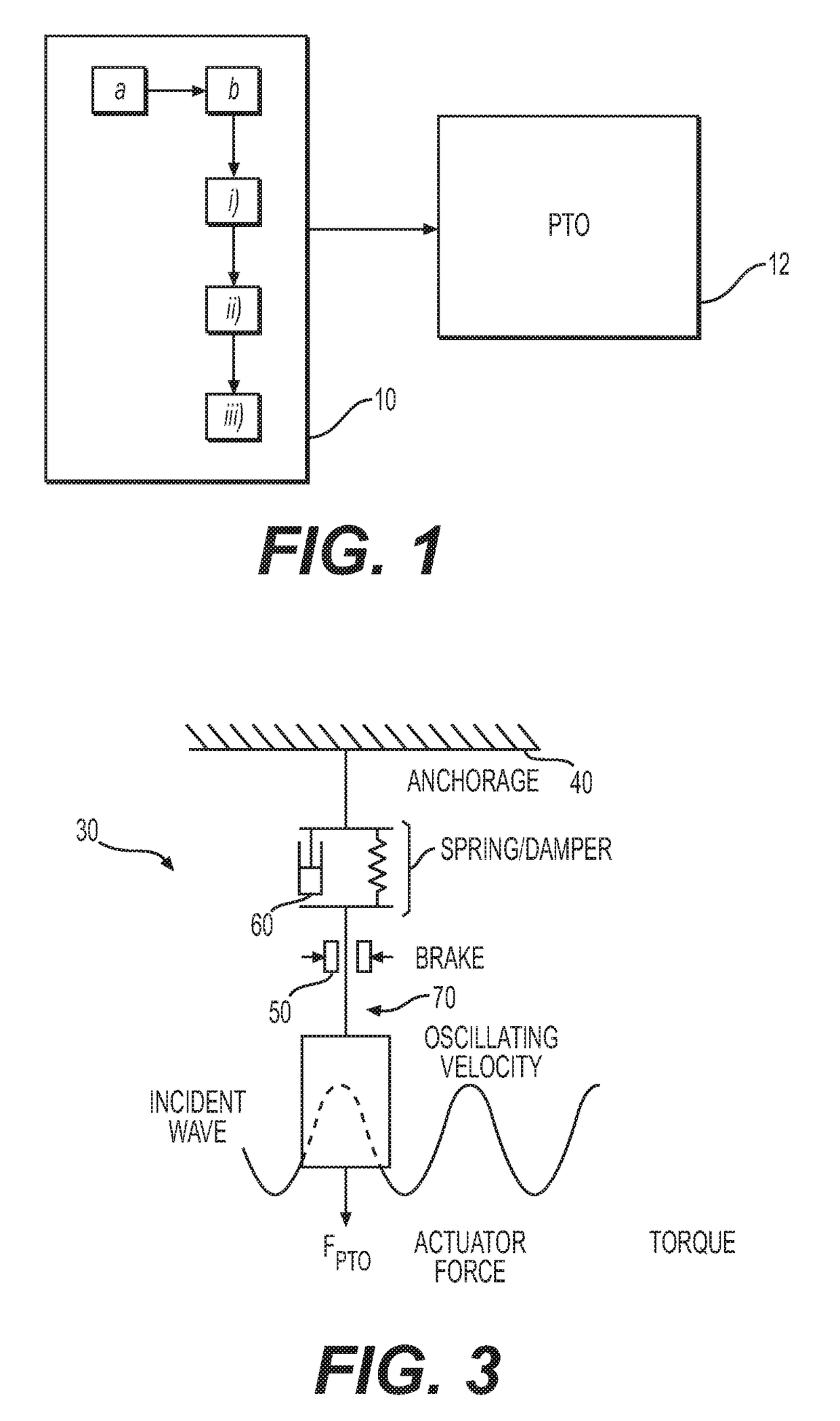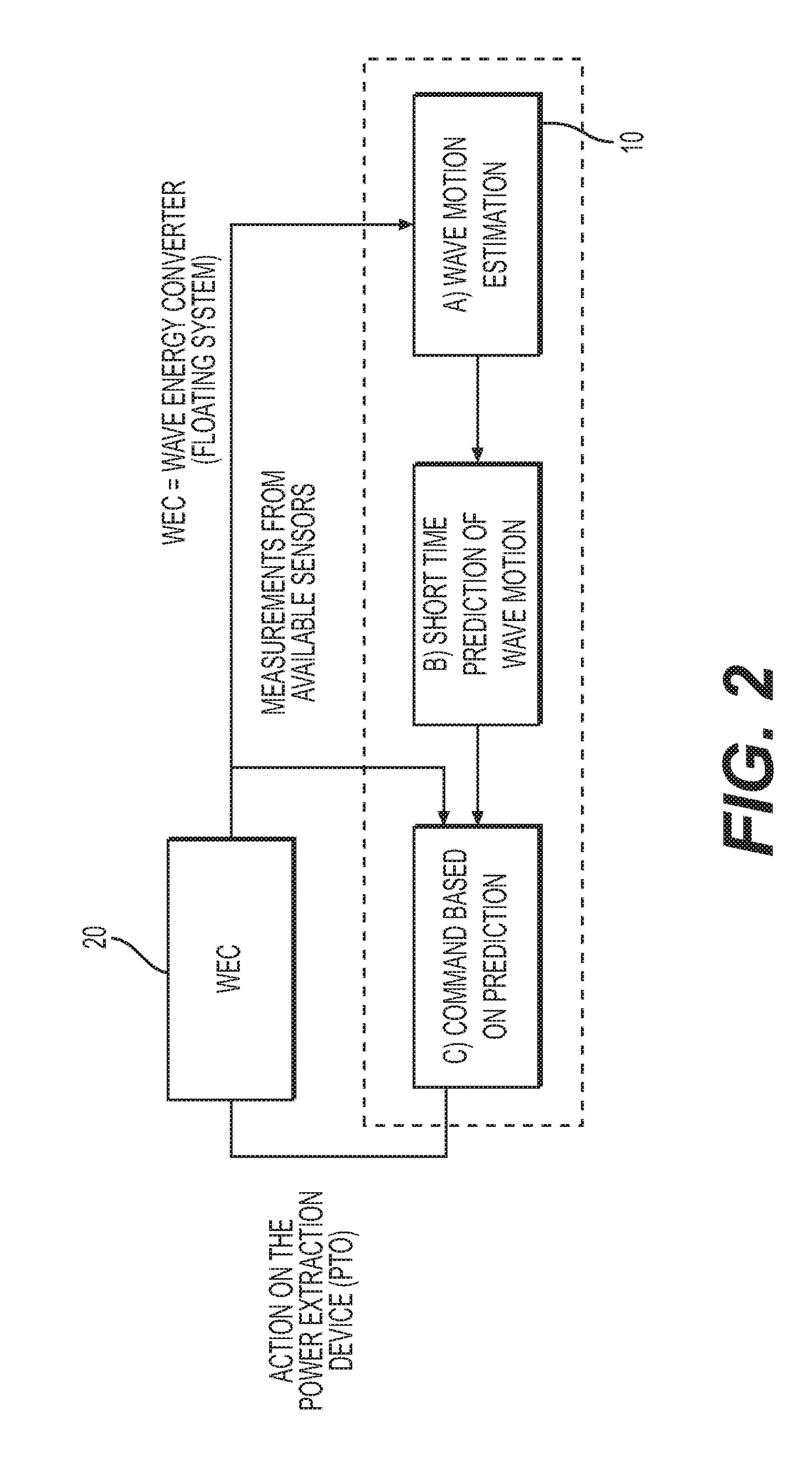Method for predicting a characteristic resulting from the swell on a floating system for at least two future time steps
a floating system and characteristic technology, applied in the field of wave prediction, can solve the problems of complex implementation of the lrpi method, inability to generate the correct prediction, and difficulty in real-time implementation, so as to achieve more flexibility and less computation time and computer memory consumption
- Summary
- Abstract
- Description
- Claims
- Application Information
AI Technical Summary
Benefits of technology
Problems solved by technology
Method used
Image
Examples
first embodiment
1) First Embodiment
[0115]According to a first embodiment of the invention, a single autoregressive wave model is constructed. For this embodiment, the variable coefficients of the autoregressive model can be determined using an extended Kalman filter. Besides, the characteristic can be determined for several (N, with N≥2) future time steps by carrying out the following stages:
[0116](1) considering time step k
[0117](2) constructing vector xAR(k−1)T of the characteristics prior to time p
[0118](3) determining the characteristic ŷ(k+1|k) for time step k+1 by use of the vector xAR(k−1)T and the vector a(k) of the time-variable coefficients, and
[0119](4) repeating stages (2) and (3) for the N future time steps by incrementing the time step.
[0120]Thus, the prediction method according to this first embodiment can comprise the following stages:[0121]a) measuring the characteristic for at least one time step,[0122]b) predicting the characteristic for at least two future time steps by carrying...
second embodiment
2) Second Embodiment
[0163]According to a second embodiment of the invention, several autoregressive wave models are constructed with one for each future time step. For this embodiment, the variable coefficients of the autoregressive model can be determined by use of a linear Kalman filter bank. A filter bank is understood to be a set of filters.
[0164]Thus, the prediction method according to this second embodiment can comprise the following stages:[0165]a) measuring the characteristic for at least one time step;[0166]b) predicting the characteristic for at least two future time steps by carrying out the following stages:[0167]i) constructing autoregressive wave models with one for each time step k, each autoregressive wave model relating the characteristic of a future time step to the measured characteristics by use of time-variable coefficients;[0168]ii) determining the time-variable coefficients of each autoregressive wave model by use of a random walk model and of an adaptive Kalm...
third embodiment
3) Third Embodiment
[0195]This third embodiment applies an additional correction stage (optional stage d) of the method) to the wave characteristic predictions generated iteratively for each future time step using a single variable-coefficient autoregressive model. The correction stage allows reducing the error accumulation inherent in the iterative calculation of the prediction over several future steps using a single autoregressive model and, more generally and obtains a prediction of higher quality by decorrelating the current prediction error from the past measurements (prediction error “whitening”).
[0196]This correction stage can be directly applied to the predictions obtained from an autoregressive model whose variable coefficients are overestimated by the extended Kalman filter, that is predictions resulting from the first variant embodiment, by improving the quality thereof. But it can also be applied to the predictions resulting from an autoregressive model whose variable co...
PUM
 Login to View More
Login to View More Abstract
Description
Claims
Application Information
 Login to View More
Login to View More - R&D
- Intellectual Property
- Life Sciences
- Materials
- Tech Scout
- Unparalleled Data Quality
- Higher Quality Content
- 60% Fewer Hallucinations
Browse by: Latest US Patents, China's latest patents, Technical Efficacy Thesaurus, Application Domain, Technology Topic, Popular Technical Reports.
© 2025 PatSnap. All rights reserved.Legal|Privacy policy|Modern Slavery Act Transparency Statement|Sitemap|About US| Contact US: help@patsnap.com



